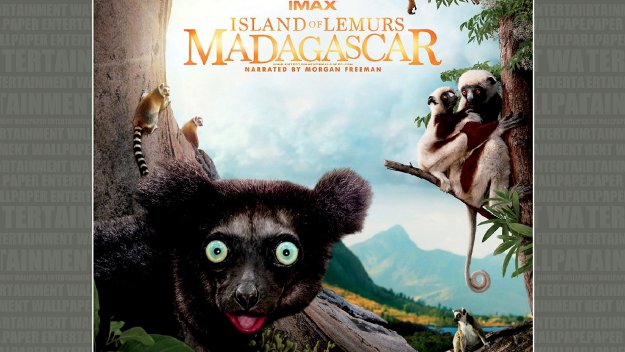Documentary Offers In-Depth Look at Lemurs in Madagascar

“Before I was a scientist, I was a social worker in Brooklyn,” said Patricia Wright, an anthropologist and conservationist who has spent nearly 30 years studying Lemurs in the rain-forests of Madagascar. She says that in Madagascar, both humans and lemurs struggle with the scarcity of resources. Man-made fires have ravaged much of the lemurs’ natural habitat. Wright is a central focus of the recently released documentary, Island of Lemurs: Madagascar, which strives to educate the general public about the plight of lemurs.
While the film’s intentions are noble, noble intentions alone do not beget good art. It’s hard to critique the film formally. At least, it’s difficult to critique it using the terms and conventions a reviewer would typically use to critique films. For one thing, this film is meant to be projected onto iMax screens. Ostensibly, its purpose is to offer an immersive, educational viewing experience for families who are visiting museums. The film’s construction, aesthetically, leaves much to be desired for purists. It feels, at times, like it was constructed by special interests who are aggressively pushing their ideology.
However, if you look at the data they present in the film, it’s easy to see why lemur lovers feel such a sense of urgency. Lemurs are humanity’s oldest living ancestor. They’ve lived on earth for 60 million years, and they even managed to survive the same asteroid collisions that wiped out the dinosaurs. The documentary says that some primitive lemurs were the size of gorillas, although those lemurs were hunted to extinction centuries ago. If certain trends persist, there’s no disputing the likelihood that the lemur could face complete extinction very soon.
The narration is provided by none other than veteran actor and humanitarian Morgan Freeman, who has become a voice-actor of choice for documentaries. But not even Freeman’s delivery manages to completely salvage the film’s turkey of a voice-over script. The script’s nadir is its closing line: “The best stories in nature are the ones that never end.”

Despite everything that the film is lacking however, the footage itself is exquisite. As it should be, with production values comparable to those of the magnificent Living Planet segments (which you can stream via Netflix or DirecTV, details here), or even the Planet Earth companion film Earth, which performed incredibly well at the box office and was noted for both its artistry and its social relevance. If you account for distracting music choices, clunky voiceover text, and the general hamfisted employment of cinematic devices to advance an agenda, it’s difficult to imagine anyone walking out of the screening saying “Wow, that was a superb piece of filmmaking.” However, it is totally reasonable to expect that people will walk away from the iMax with their children and be able to have a meaningful conversation about the importance of environmental conscientiousness.
Author Bio:
Kate Voss is a contributing writer at Highbrow Magazine.






























































































































































































































































































































